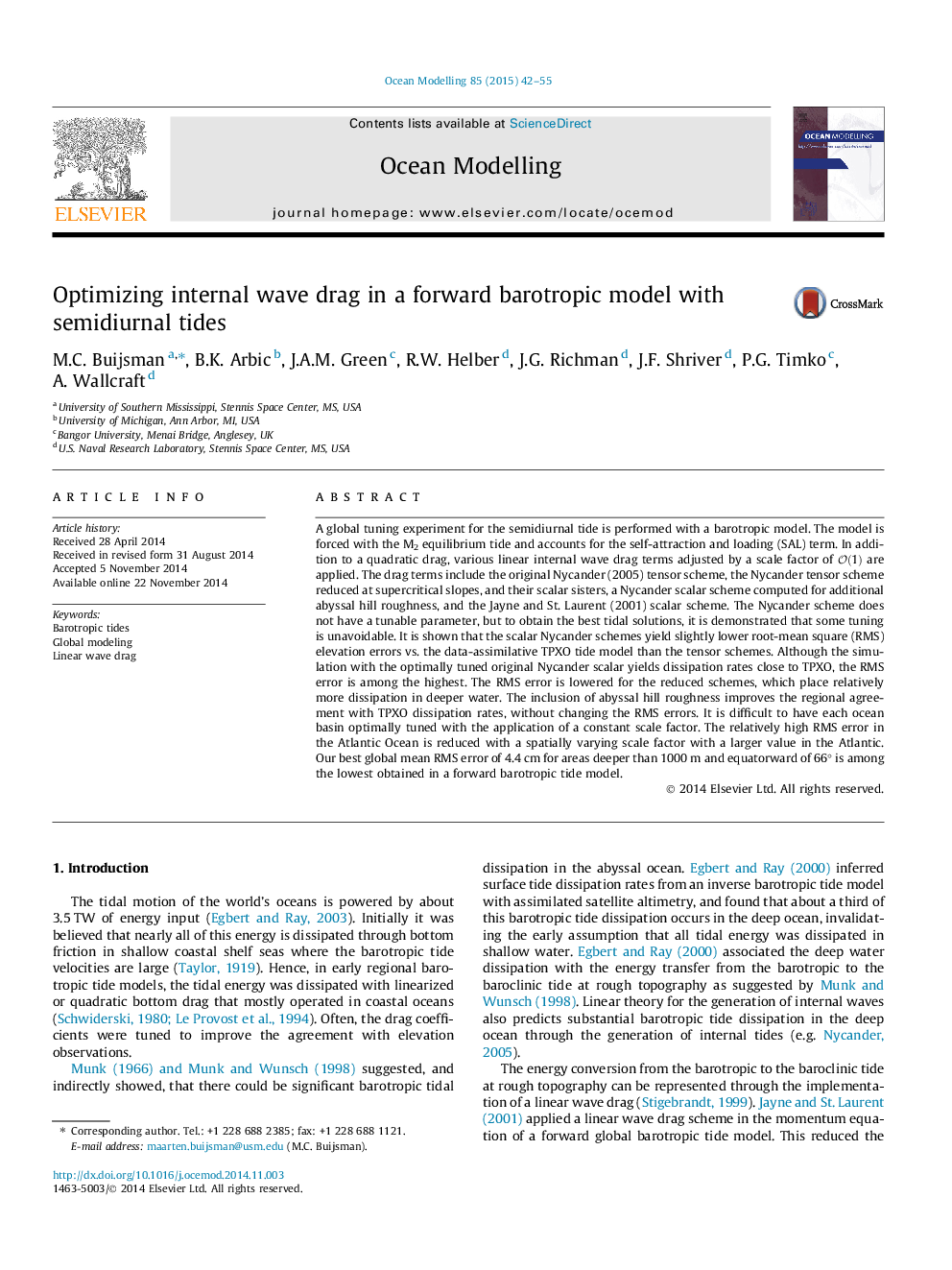| کد مقاله | کد نشریه | سال انتشار | مقاله انگلیسی | نسخه تمام متن |
|---|---|---|---|---|
| 4552030 | 1627763 | 2015 | 14 صفحه PDF | دانلود رایگان |
• We tune several linear (modified) wave drag schemes in a tidal barotropic model.
• We compare with TPXO elevation and dissipation rates, horizontally and with depth.
• A scalarized tensor wave drag performs as well or better than the tensor equivalent.
• Reducing the wave drag strength at supercritical slopes improves the solution.
• The inclusion of artificial abyssal hill roughness yields a modest improvement.
A global tuning experiment for the semidiurnal tide is performed with a barotropic model. The model is forced with the M2 equilibrium tide and accounts for the self-attraction and loading (SAL) term. In addition to a quadratic drag, various linear internal wave drag terms adjusted by a scale factor of O(1)O(1) are applied. The drag terms include the original Nycander (2005) tensor scheme, the Nycander tensor scheme reduced at supercritical slopes, and their scalar sisters, a Nycander scalar scheme computed for additional abyssal hill roughness, and the Jayne and St. Laurent (2001) scalar scheme. The Nycander scheme does not have a tunable parameter, but to obtain the best tidal solutions, it is demonstrated that some tuning is unavoidable. It is shown that the scalar Nycander schemes yield slightly lower root-mean square (RMS) elevation errors vs. the data-assimilative TPXO tide model than the tensor schemes. Although the simulation with the optimally tuned original Nycander scalar yields dissipation rates close to TPXO, the RMS error is among the highest. The RMS error is lowered for the reduced schemes, which place relatively more dissipation in deeper water. The inclusion of abyssal hill roughness improves the regional agreement with TPXO dissipation rates, without changing the RMS errors. It is difficult to have each ocean basin optimally tuned with the application of a constant scale factor. The relatively high RMS error in the Atlantic Ocean is reduced with a spatially varying scale factor with a larger value in the Atlantic. Our best global mean RMS error of 4.4 cm for areas deeper than 1000 m and equatorward of 66° is among the lowest obtained in a forward barotropic tide model.
Journal: Ocean Modelling - Volume 85, January 2015, Pages 42–55
